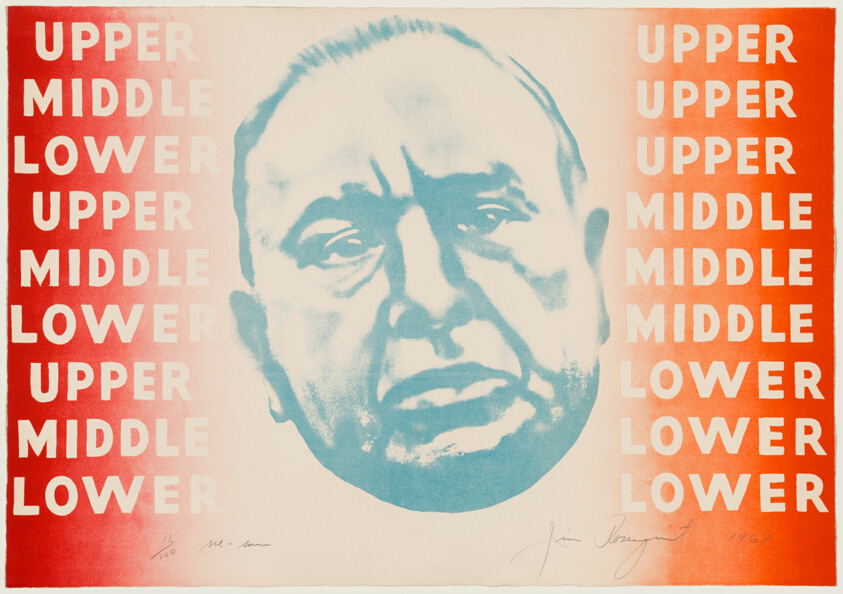Your cart is currently empty!

Our Inner-City Communities
Breaking Free from Reductive Influences
The current cultural dialogue surrounding inner-city communities has been reduced to a narrative that conflates socioeconomic struggles with “black culture.” This reductive framing, perpetuated by media and elites, validates harmful behaviors such as gang culture and violence while fostering a victimhood mentality. This narrative distracts from the real issues at hand—socioeconomic deprivation and limited access to resources—and instead traps communities in cycles of economic stagnation.
Historian Michelle Alexander explores this dynamic in The New Jim Crow, where media and political narratives combined with mass incarceration policies have disproportionately targeted black communities, perpetuating poverty and violence. By glorifying these harmful behaviors, the focus shifts away from long-term solutions such as education reform and economic empowerment, reinforcing a sense of powerlessness that prevents personal growth and collective progress.
The Commodification of Culture as a Tool of Control
Cultural elements such as AAVE, along with inner-city music, fashion, and slang, have been commodified by elites and turned into products for mass consumption. While AAVE holds cultural significance, its validation as an identity marker often strips it of deeper meaning, turning it into a commercial tool that distracts from class struggles.
For example, blaxploitation films like Superfly marketed a romanticized vision of inner-city life, focusing on gangs, violence, and hyper-masculinity, while ignoring the socioeconomic and historical roots of these issues. By turning these cultural expressions into entertainment for broader consumption, the elite exploit cultural elements without addressing the systemic oppression that causes them to arise in the first place. This commodification of culture contributes to the stagnation of communities by diverting attention away from class-based solutions and reinforcing negative stereotypes.
AAVE and Socioeconomic Subjugation
The labeling of African American Vernacular English (AAVE) as a racial identity marker rather than a class-based phenomenon creates a misleading narrative that distracts from the socioeconomic conditions that drive its use. AAVE, like other non-standard dialects, is often used by communities facing systemic barriers to economic mobility. By framing AAVE as inherently tied to race, the focus shifts from class-based struggles that underlie its prevalence, reinforcing divisions along racial lines and limiting the potential for solidarity in addressing real economic and educational barriers.
William Labov’s work has historically validated AAVE as a legitimate dialect, but it often fails to address how the validation of AAVE serves the interests of those who benefit from maintaining class divisions. By framing AAVE as an identity to be validated, the focus shifts away from providing the tools necessary for class mobility, such as access to quality education and opportunities for economic growth.
The Psychological Impact: Limiting Growth Through Victimhood
The current media narrative surrounding inner-city culture, particularly through the glorification of violence and victimhood, limits the psychological and spiritual growth necessary for communities to break free from socioeconomic subjugation. Instead of promoting motivational dissatisfaction, which can drive personal and community growth, these narratives tell individuals that they are already “enough,” fostering complacency rather than self-improvement.
Paolo Freire’s Pedagogy of the Oppressed emphasizes how true empowerment comes from self-reflection and internal growth. When individuals are empowered by external validation without the need for psychological growth, they internalize a sense of powerlessness that prevents ambition and self-improvement. The media portrayal of inner-city culture, focused on victimhood and external recognition, reinforces a sense of limitation, inhibiting the kind of internal development necessary for class mobility.
Race as a Distraction from Class Struggles
The focus on race in these narratives often distracts from the class-based inequalities that are the root of inner-city struggles. Adolph Reed Jr., in his essay The Trouble with Disparity, critiques how race is used to divide the working class and redirect attention away from economic injustice. By framing these struggles primarily as racial issues, elites are able to divert attention from the systemic barriers that affect all low-income communities.
Promoting the rich history of success within minority communities is essential to shift the tone away from victimhood. Figures like Fritz Pollard, a black businessman and philanthropist who cultivated a relationship with John D. Rockefeller to empower his community, show how strategic relationships and empowerment can help individuals rise above their circumstances. These stories provide a powerful counter-narrative, focusing on growth and achievement, rather than reinforcing the idea of victimhood.
How Elites Use Cultural Narratives to Maintain Class Divisions
The elite control over media and culture allows them to shape narratives that reinforce class divisions. By commodifying cultural elements like AAVE and focusing on surface-level validation rather than true socioeconomic empowerment, elites perpetuate stagnation within inner-city communities. The validation of inner-city culture through the lens of AAVE, gang culture, and victimhood serves the interests of those who benefit from class division by preventing upward mobility and solidarity among the lower classes.
William Labov’s prominence in the discussion around AAVE is emblematic of how reductive narratives can prevent class mobility. By focusing on validating AAVE without addressing the socioeconomic barriers that underlie its prevalence, Labov’s work unintentionally supports a system that keeps these communities trapped in cycles of poverty.
Through strategies like the Cloward and Piven problem-reaction-solution approach, elites maintain control by presenting themselves as philanthropic responders to problems they help perpetuate. The media serves as a tool to promote division, ensuring that the working class remains fragmented and distracted from addressing real solutions such as economic reform.
Real Solutions: Tools for Empowerment
To break free from these reductive influences, inner-city communities need real tools for empowerment: access to quality education, the elimination of food deserts, exposure to critical thinking skills, and personal development programs. These tools allow individuals to cultivate internal validation through self-reflection and spiritual growth, rather than relying on external recognition that reinforces a sense of powerlessness.
This approach aligns with Paolo Freire’s vision of empowerment through education. By encouraging individuals to see themselves as active agents capable of changing their circumstances, we can dismantle the reductive narratives that hold these communities back and pave the way for true class mobility.
Read More:
To learn more about the perspective that lead to the conclusions discussed, consider the following resources:
1. Race as a Distraction in Class Struggle
Studies on class-based inequality and the distraction of racial issues have been explored in sociology and political theory. For example:
- Thomas Frank‘s book “What’s the Matter with Kansas?” argues that political elites often shift the focus to identity issues (like race) to distract from economic policies that harm the working class.
- Barbara and John Ehrenreich‘s work on the Professional-Managerial Class (PMC) highlights how the focus on identity politics can serve to divide lower-class groups and redirect attention away from economic injustices.
- Adolph Reed Jr., a political scientist and historian, has written extensively about how race is often used as a tool to divide working-class people. His essay “The Trouble with Disparity” critiques how focusing on racial inequality in the neoliberal era can obscure the structural problems of class inequality.
2. Ebonics as a Socioeconomic Issue
Sociolinguistic studies have examined the relationship between language use and class. Research shows that dialects like African American Vernacular English (AAVE) or ebonics are associated with socioeconomic factors rather than intrinsic racial characteristics. Key studies include:
- William Labov, a linguist, most prominent research on AAVE; argues that it is not a sign of linguistic deficiency but a fully structured dialect that evolved in specific social conditions. Labov’s work emphasizes the socioeconomic environments in which AAVE thrives, particularly in underprivileged urban communities, yet downplays the implications, thus avoiding a constructive conversation on how to improve the quality of life for individuals among inner city communities.
- A study titled “Beyond the Black-White Binary: Latino, Asian, and Multiracial Language in the Inner City” (Hispanic Journal of Behavioral Sciences, 2008) demonstrates that language variation, including AAVE, spans different racial and ethnic groups in lower-class urban environments. This supports the claim that ebonics is more about class and regional association than race.
- John Baugh’s research in sociolinguistics has shown that dialect discrimination is often tied to socioeconomic status, rather than race itself, and that speakers of non-standard dialects face educational and economic disadvantages.
3. The Role of Media and Intelligence Agencies in Shaping Culture
The role of intelligence agencies in manipulating culture has been the subject of much speculation, though concrete studies specifically on the manipulation of ebonics or African American culture by agencies like the CIA are harder to find. However, several well-documented instances exist of intelligence agencies shaping media and culture to influence public perception:
- Operation Mockingbird is one well-known CIA program during the Cold War, in which the CIA allegedly influenced major media outlets to spread propaganda. Though this program focused on broader societal issues, it shows precedent for government involvement in shaping public discourse.
- Yasha Levine’s Surveillance Valley: The Secret Military History of the Internet delves into how military and intelligence agencies have shaped public discourse through media and technology, manipulating narratives to suit broader strategic goals.
- Studies on “blaxploitation” films like Superfly suggest that these media productions reflected and sometimes reinforced damaging stereotypes about African Americans. Some have argued that these films served to commercialize and normalize harmful depictions of inner-city culture that emerged during the Civil Rights era. This could be seen as a form of media manipulation that influenced cultural narratives within African American communities.
4. The Decline of Black Middle-Class Communities
Research on the decline of black middle-class communities and the role of external forces (such as crime and drugs) in destabilizing them is well documented:
- William Julius Wilson‘s “The Declining Significance of Race” explores how class divisions have become more important than race in determining socio-economic outcomes for African Americans. Wilson also addresses how the rise in crime and the drug trade disproportionately affected urban black communities, contributing to their decline.
- Sudhir Venkatesh, a sociologist, has studied gang culture extensively in Chicago. His work, such as “Gang Leader for a Day”, reveals how gangs infiltrated economically vulnerable communities, disrupting social cohesion and contributing to the decline of middle-class aspirations.
- Michelle Alexander’s “The New Jim Crow” addresses how the War on Drugs and mass incarceration policies targeted African American communities, further eroding the middle-class black population. These policies led to the breakdown of families, increased poverty, and social instability, which are tied to the rise in gang culture.
5. Language as a Tool of Subjugation
The idea that language can be a tool of subjugation is widely supported in academic research, particularly in the context of colonization and power dynamics:
- George Orwell’s 1984 is the classic example of how language can be used for control, but modern studies in critical linguistics and discourse analysis also explore how language shapes thought and can be used to reinforce power structures.
- Paolo Freire’s “Pedagogy of the Oppressed” discusses how language and education systems can be tools of both oppression and liberation, depending on how they are structured. Freire argues that controlling the language of the oppressed keeps them in a subordinate position.
- Studies in critical race theory also explore how language and dialects are used to maintain social hierarchies, as seen in the marginalization of AAVE and other non-standard dialects in educational systems.

Leave a Reply